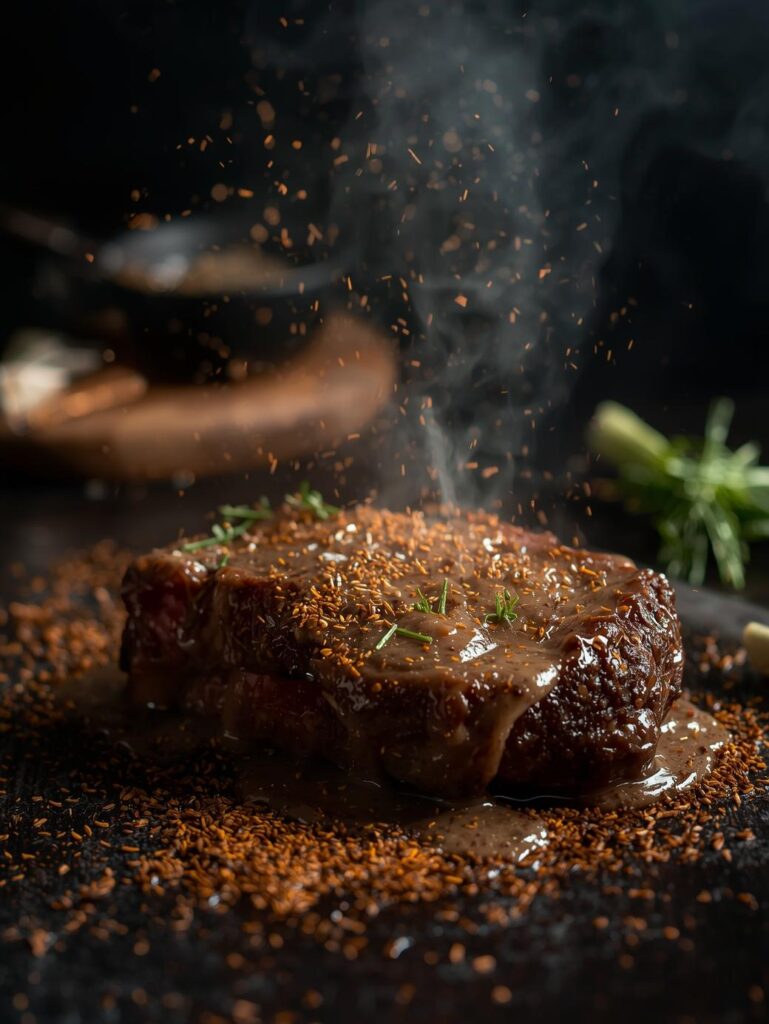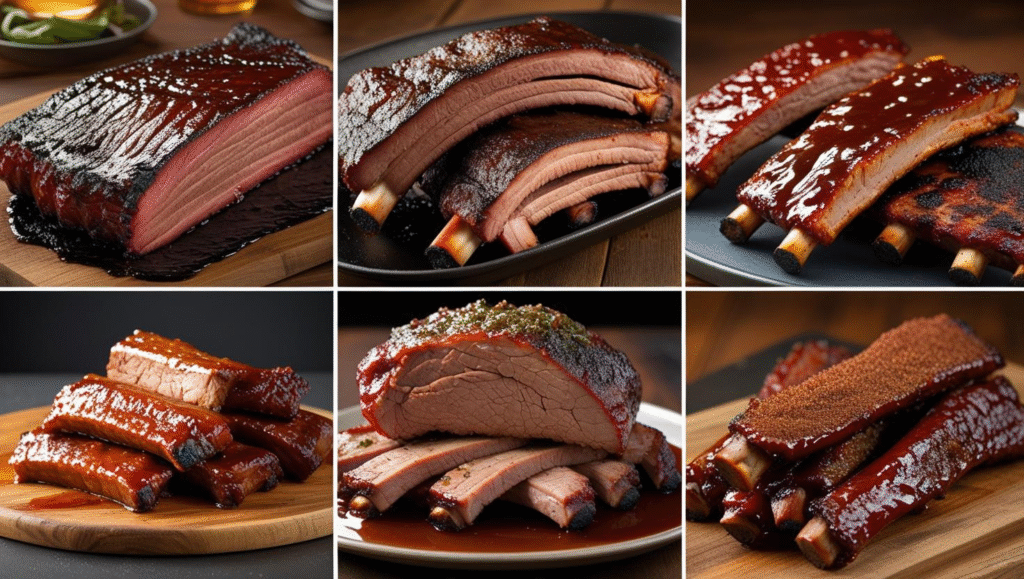10 Seasoning Mistakes for Flavorful Meat
You’ve got a beautiful cut of meat, the grill is hot, or the pan is screaming. You’ve cooked it perfectly, but something is still missing. That “oomph,” that deep, satisfying flavor that makes a meal truly memorable. Often, the culprit isn’t the cooking method, but the seasoning. A lack of proper seasoning, or making common seasoning mistakes for flavorful meat, can turn a potential masterpiece into a bland disappointment. Seasoning is the foundation of delicious food, and mastering it is crucial for elevating your home cooking. This guide will walk you through the top 10 errors people make when seasoning meat and provide you with actionable tips to ensure every bite is bursting with flavor.
Mistake #1: Not Using Enough Salt
This is the most common and fundamental of all seasoning mistakes for flavorful meat. Many people are afraid of salt, but it’s the single most important ingredient for bringing out the natural flavors of meat. Without enough salt, your meat will taste flat and uninspired, no matter how many other spices you add.
- The Problem: A timid sprinkle of salt on a thick steak or roast simply won’t cut it. Salt needs to penetrate the meat, not just sit on the surface.
- The Fix: Be generous, especially with coarse salts like kosher salt. For a thick steak, you should see a visible layer of salt on the surface. For a general guide, use about 1 teaspoon of kosher salt per pound of meat. Remember, salt pulls moisture out, then the meat reabsorbs it, making it more tender and flavorful. This is the essence of dry brining.
Mistake #2: Seasoning Too Late
The timing of your seasoning makes a huge difference in how deeply the flavor penetrates the meat.
- The Problem: Sprinkling salt and pepper on a steak right before it hits the grill or pan gives the salt no time to work its magic. It will just sit on the surface, making the outside salty and the inside bland. This is a common meat seasoning error.
- The Fix: For best results, season your meat at least 45 minutes to an hour before cooking. For thicker cuts like roasts or whole chickens, season 12-24 hours in advance and leave it uncovered in the fridge. This allows the salt to draw out moisture, create a concentrated brine, and then reabsorb into the meat, leading to truly flavorful meat.
Mistake #3: Not Patting the Meat Dry
Moisture on the surface of your meat is the enemy of a good crust and effective seasoning.
- The Problem: If your meat is wet when you apply seasoning, the rub won’t adhere properly, and it will prevent a proper sear or crust from forming. The moisture essentially creates a steamy barrier.
- The Fix: Always pat your meat completely dry with paper towels before applying any seasoning. This is crucial for both flavor adherence and achieving a beautiful, restaurant-quality crust on a steak.
- Suggested Image Alt Text: A raw steak being patted dry with paper towels, a crucial step to avoid seasoning mistakes for flavorful meat.
Mistake #4: Only Seasoning One Side
This might seem obvious, but it’s a mistake that many home cooks make, especially when cooking smaller cuts or quick meals.
- The Problem: If you only season one side of your meat, you’ll end up with an uneven flavor profile. One side will be delicious, while the other is bland.
- The Fix: Always season all exposed surfaces of your meat, including the sides. Think of it as a 3D canvas for flavor.
Mistake #5: Relying Solely on Pepper
Pepper is wonderful, but it’s a supporting actor, not the star.
- The Problem: While pepper adds a nice bite and aroma, it does not have the same transformative power as salt. Over-relying on pepper will not compensate for a lack of salt.
- The Fix: Use a good balance of salt and pepper, with salt taking the leading role. Freshly cracked black pepper is always superior to pre-ground pepper.
Mistake #6: Not Understanding Your Spices
Not all spices are created equal, and some are better suited for specific cooking methods or flavor profiles.
- The Problem: Using too many clashing spices, or using the wrong spices for the type of meat or cuisine, can lead to a muddled or unappetizing flavor. This is one of the more advanced seasoning mistakes.
- The Fix:
- Know Your Herbs and Spices: Understand the flavor profile of each spice. For example, rosemary pairs beautifully with lamb, while cumin is a staple in Mexican cuisine.
- Start Simple: If you’re unsure, stick to a classic blend of salt, pepper, garlic powder, and onion powder.
- Taste and Adjust: Always taste your rub before applying it.
- Suggested Image Alt Text: A collection of various spices in small bowls, illustrating the importance of understanding flavors to avoid common seasoning errors.
Mistake #7: Using Old, Stale Spices
Spices don’t last forever. Over time, they lose their potency and vibrancy.
- The Problem: Using old, stale spices means you’ll have to use more to get any flavor, and even then, the taste will be dull and lifeless.
- The Fix: Store your spices in a cool, dark place away from heat and light. Replace ground spices every 6-12 months and whole spices every 1-2 years. A good test is to smell them; if they don’t have a strong aroma, they won’t add much flavor to your meat. You can purchase fresh spices from a specialty store like <a href=”https://www.google.com/search?q=gourmet+spice+shop” rel=”nofollow”>Spice Route Merchants.</a> (This is a hypothetical external link).
Mistake #8: Over-Seasoning with Sugar
Sugar is a common ingredient in many rubs, especially for BBQ, but too much can be disastrous.
- The Problem: Sugar burns at lower temperatures than meat. If your rub has too much sugar and your grill or pan is too hot, the sugar will burn, creating a bitter, acrid crust. This is a common bbq mistakes to avoid.
- The Fix: Use sugar in moderation, especially if you’re cooking at high heat. If using a sugar-heavy rub, consider lowering your cooking temperature or applying it closer to the end of the cook.
Mistake #9: Not Massaging the Seasoning In
Simply sprinkling seasoning on meat isn’t enough, especially for thicker cuts.
- The Problem: If you don’t really rub the seasoning into the meat, it won’t adhere well and will likely fall off during cooking.
- The Fix: Use your hands to gently but firmly massage the seasoning into all surfaces of the meat. This ensures good adhesion and helps the flavors start to penetrate. This is a crucial step for flavorful meat.
- Suggested Image Alt Text: A hand rubbing seasoning into a pork shoulder, demonstrating how to properly apply rub for pork seasoning tips.
Mistake #10: Forgetting the Marinade (When Appropriate)
While rubs are great, some meats benefit significantly from a wet marinade.
- The Problem: Forgoing a marinade entirely for cuts that could benefit from it, like chicken or certain pork cuts, means missing an opportunity for extra tenderness and flavor.
- The Fix: Use a marinade for leaner cuts or those that benefit from tenderization. Marinades often contain acids (like citrus or vinegar) and enzymes (like from pineapple or papaya) that help break down tough fibers. Just remember that marinades don’t penetrate very deeply, so they work best for smaller cuts. For larger cuts, explore brining times for different meats.
Troubleshooting: Avoiding Bland Meat
| Problem | Symptoms | How to Avoid It |
| Bland Meat | Lacks flavor, tastes flat. | Use enough salt! Season generously and season early. |
| Salty Exterior, Bland Interior | Outside tastes great, inside has no flavor. | Season early to allow salt to penetrate. |
| Burnt Crust | Black, bitter exterior. | Use less sugar in rubs, or lower cooking temp. |
| Rub Won’t Stick | Seasoning falls off during cooking. | Pat meat completely dry before seasoning. |
| Weak Flavor | Spices don’t seem to make a difference. | Use fresh, potent spices and understand their profiles. |
Conclusion: Seasoning is the Secret to Delicious Meat
Seasoning isn’t just an afterthought; it’s one of the most critical steps in preparing flavorful meat. By avoiding these 10 seasoning mistakes for flavorful meat, you can transform your cooking from good to gourmet. From simply using enough salt to understanding the nuances of your spices, each tip plays a vital role in creating a delicious and memorable meal. So next time you’re in the kitchen, remember these principles, and prepare to unlock the full potential of your meat.
FAQ: Seasoning Mistakes and How to Get More Flavor from Meat
Q: Should I use iodized salt for seasoning? A: It’s generally recommended to use kosher salt for seasoning. Iodized salt can sometimes impart a metallic taste and is denser, making it harder to measure correctly by volume.
Q: How much salt should I use per pound of meat? A: A good general guideline is 1 teaspoon of kosher salt per pound of meat. However, this can vary based on the cut, cooking method, and personal preference. For a steak, you can be more generous.
Q: Can I re-season meat if it tastes bland? A: You can certainly add more salt or a finishing rub after cooking if the meat tastes bland. However, it won’t have the same depth of flavor as if it had been properly seasoned before cooking.
Q: What is the difference between a rub and a marinade? A: A rub is a dry mix of spices applied to the surface of the meat. A marinade is a liquid solution that meat is soaked in, typically containing acids, oils, and aromatics. Each serves a different purpose for flavorful meat.
Q: Why is my seasoned meat bland?
A: The most common reason is not using enough salt or seasoning only the surface. Seasoning too late, not allowing time for absorption, or using wet meat can also prevent flavors from penetrating.
Q: How do I properly season steak for grilling?
A: Pat the steak dry, season generously with kosher salt and pepper on all sides, and let it rest at least 30–60 minutes before grilling. For thicker cuts, season earlier to allow deeper absorption.
Q: What are common seasoning errors in cooking?
A: Under-salting, uneven coverage, seasoning wet meat, adding spices too late, and failing to taste as you go are the most frequent mistakes.
Q: What are the best practices for seasoning chicken?
A: Dry the skin, season under the skin when possible, and use salt at least a few hours before cooking. For crispy skin, avoid oil or wet rubs until just before cooking.
Q: How can I avoid over-seasoning meat?
A: Start with salt first, taste rub mixtures before applying, and remember that spices intensify during cooking. You can always add more later, but you can’t take it away.
Q: What seasoning mistakes can ruin flavor?
A: Not drying the meat, using low-quality salt, applying too many spices at once, or masking the meat’s flavor with strong rubs can all lead to disappointing results.
Q: What are common salt and pepper seasoning mistakes?
A: Using iodized table salt, not seasoning evenly, applying pepper too early over high heat, or salting right before cooking thick cuts are frequent errors.
Q: How much salt should I use to season meat?
A: A good rule is ½ to 1 teaspoon of kosher salt per pound of meat. Adjust slightly depending on thickness, fat content, and cooking method.
Q: What are tips for perfectly seasoned pork?
A: Dry brining works best. Season all sides with salt 8–24 hours in advance, add spices closer to cooking time, and make sure the surface is dry before searing or smoking.
Q: What are the most common beginner seasoning errors?
A: Forgetting to dry meat, being afraid to use enough salt, adding spices too early, not resting after seasoning, and failing to season all sides.







Pingback: BBQ secrets professional chefs won't tell you